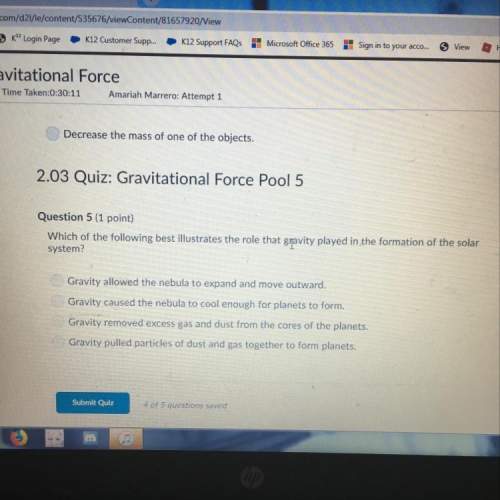4. Consider the following system at equilibrium:
A+B C
a. According to Le Châtelier's Princip...

Chemistry, 06.04.2021 19:10 viktoria1198zz
4. Consider the following system at equilibrium:
A+B C
a. According to Le Châtelier's Principle, what effect will increasing the
amount of reactant A have upon the amount of product C? Will it
increase the amount of C or decrease the amount of C?
b. In which direction did this increase in the amount of A shift the
equilibrium? To the left, or to the right?

Answers: 3


Other questions on the subject: Chemistry


Chemistry, 22.06.2019 12:00, angtrevv
In a laboratory, 1.55mg of an organic compound containing carbon, hydrogen, and oxygen is burned for analysis. this combustion resulted in the formation of 1.45mg of carbon dioxide and .89 mg of water. what is the empirical formula for this compound?
Answers: 1


Chemistry, 22.06.2019 15:30, neariah24
Plz me ! 1 which of earths spheres contains most of its mass? a atmosphere b hydrosphere c geosphere* d biosphere 2 erosion and weathering are examples of which types of forces? a constructive forces b destructive forces* c gravitational forces d inertia-related forces 3 which of the following statements about earths atmosphere is true? a earths atmosphere contains 78% water vapor which is essentail to life b earths atmosphere contains 21% oxygen c earths atmosphere contains carbon dioxide which all life forms require d earths atmosphere allows radiation from the sun to pass through it and warm earths surface* 4 the strenght of the force of gravity between two objects is determined by which of the following factors? select all that apply a the messes of the objects* b the distance between the objects* c the volumes of the objects d the surface area of the objects 5 earth and moon are kept in there respective orbits due to the influence of a inertia b gravity c gravity and inertia* d neither gravity or inertia if you answer all questions right i will give
Answers: 1
You know the right answer?
Questions in other subjects:




History, 08.07.2019 07:30

Mathematics, 08.07.2019 07:30


English, 08.07.2019 07:30

History, 08.07.2019 07:30





